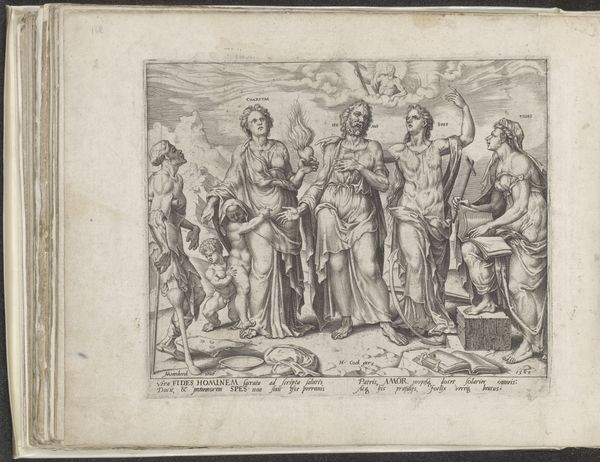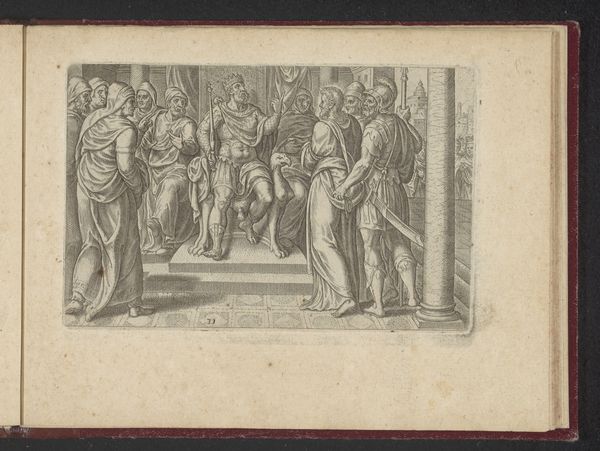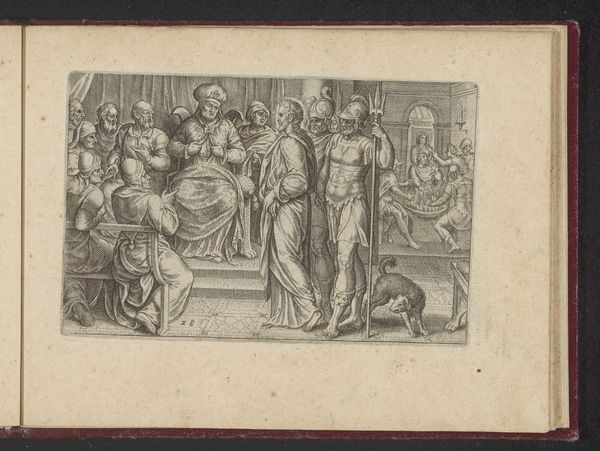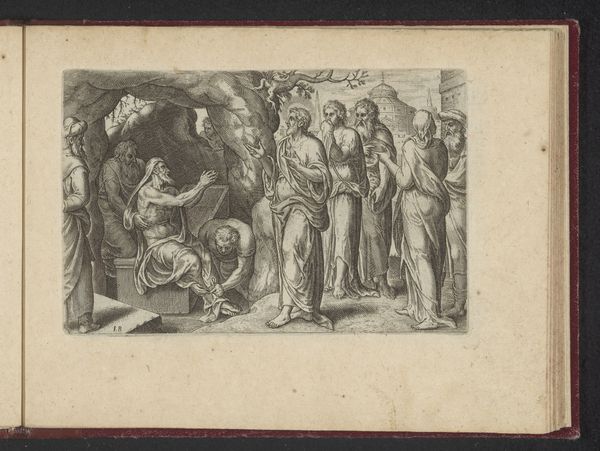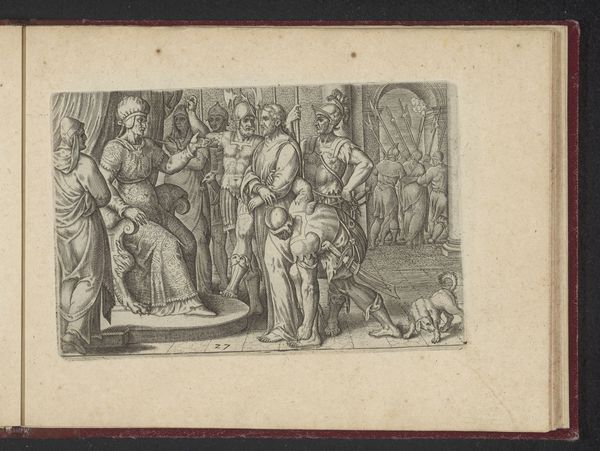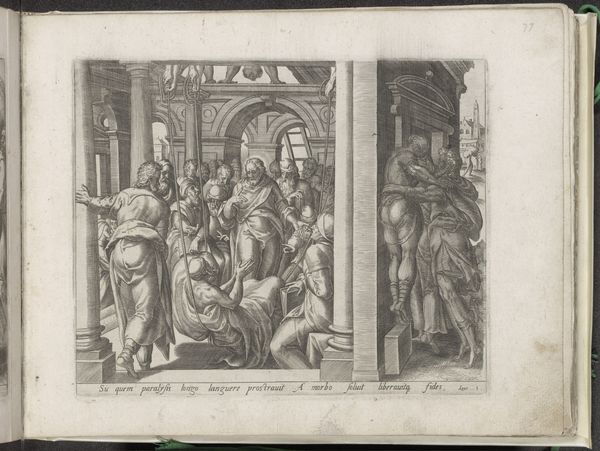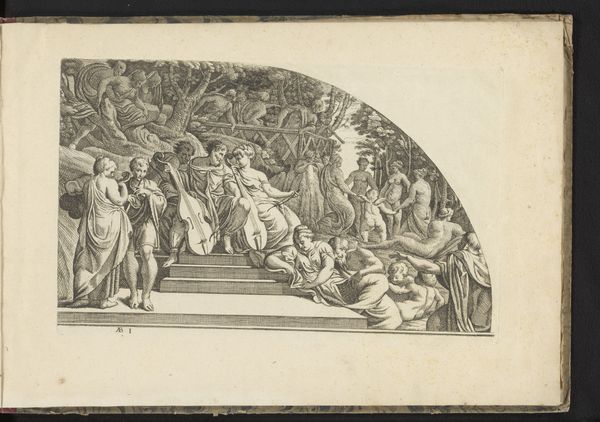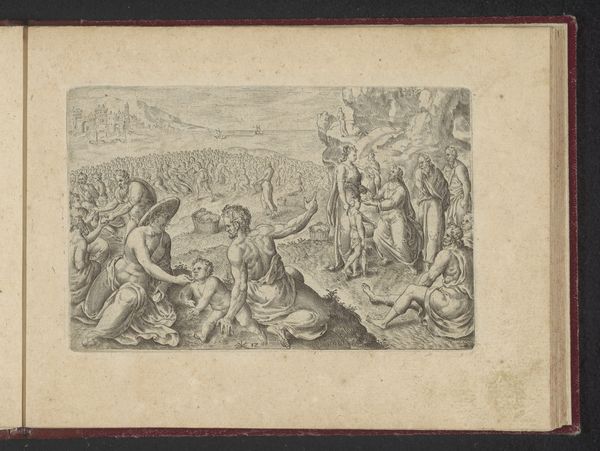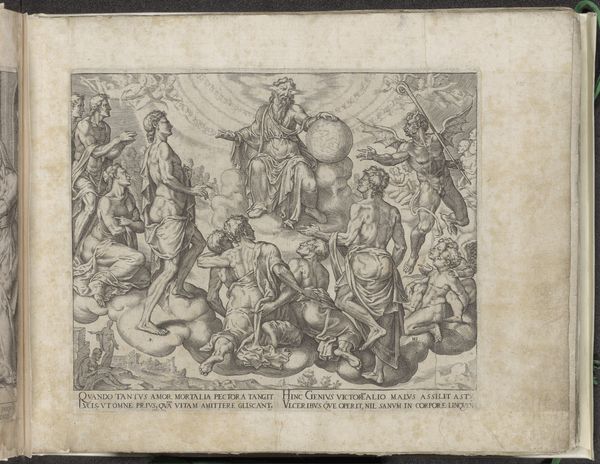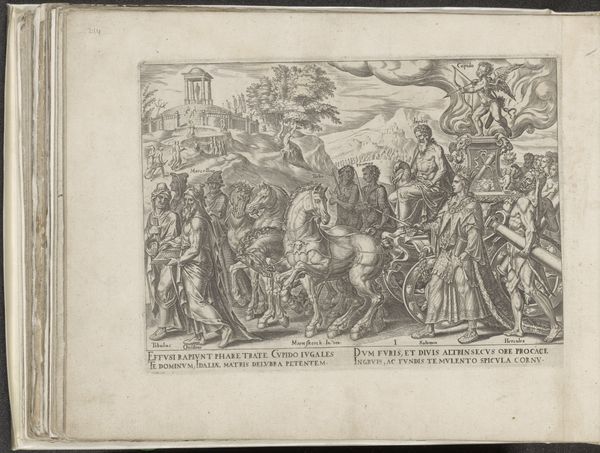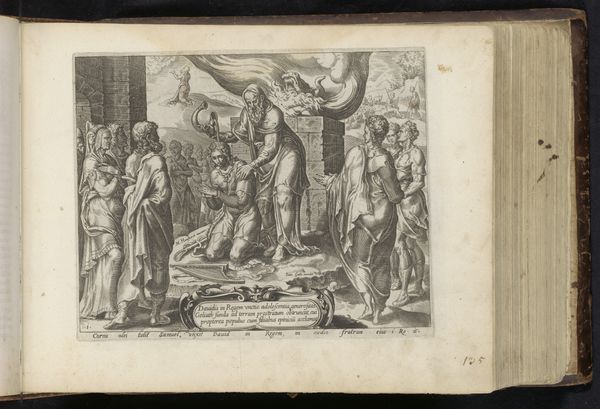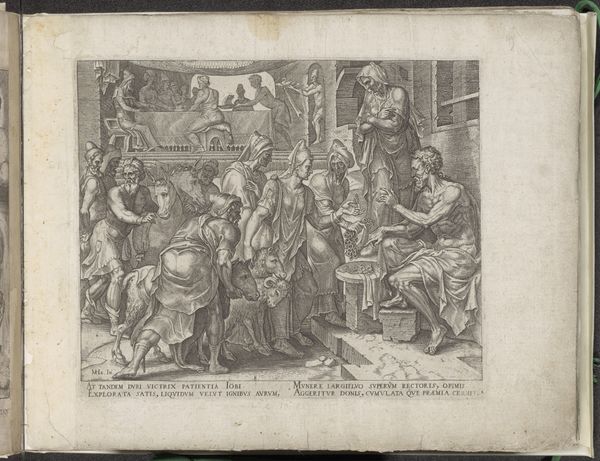
print, engraving
# print
#
figuration
#
history-painting
#
italian-renaissance
#
engraving
Dimensions: height 92 mm, width 139 mm, height 137 mm, width 183 mm
Copyright: Rijks Museum: Open Domain
Curator: Here we have a look at "Christ Blessing the Children," an engraving by Philips Galle dating back to 1573, now held at the Rijksmuseum. What strikes you initially? Editor: It's fascinating how small the children are in comparison to Christ, but their liveliness animates the scene. They are practically clambering for his attention. I am intrigued by the technical aspects of the engraving. How did Galle achieve such fine details and variations in shading in his printing practice at the time? Curator: Galle’s engraving exemplifies the spread of religious imagery during the late Renaissance. The distribution of images like this depended greatly on workshops and networks of patronage that often shaped the political contexts in which they were received and viewed by diverse audiences. The means of production were linked to political forces. Editor: And the history-painting context becomes so apparent when we see the children's clothing--little to no clothing at all! Curator: Indeed, there is so much emphasis on the idealized human form, inspired from classical antiquity during the Italian Renaissance, even in a biblical scene like this one. Editor: Looking beyond just aesthetic inspiration, it begs the question how these sorts of prints fostered accessibility to art and broadened artistic practices within religious communities during that time period. These prints may not have the status of original paintings, but what about accessibility and the material use by communities? Curator: Precisely! These artworks provided ways to contemplate religious and ethical themes. It suggests how images moved and influenced thought within those communities, and maybe fostered discussion as to the very politics of that representation of Christ with the children as we are doing right now. Editor: It provides us with so much to consider regarding labor, dissemination, and consumption of imagery and what counts as artistic practice itself. It brings to question our expectations of Galle’s time when engaging art production within society and community. Curator: Galle’s "Christ Blessing the Children" represents not only a biblical narrative but provides insight into artistic dissemination within cultural frameworks. Editor: Agreed, a testament to the interplay of skill, belief, and materials, prompting dialogue even centuries later.
Comments
No comments
Be the first to comment and join the conversation on the ultimate creative platform.
